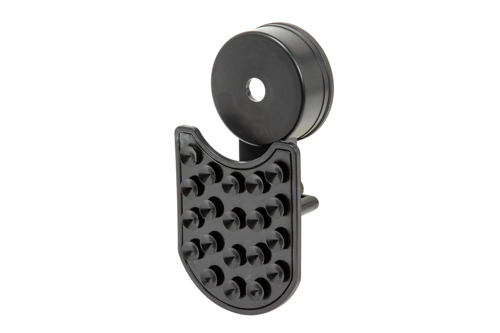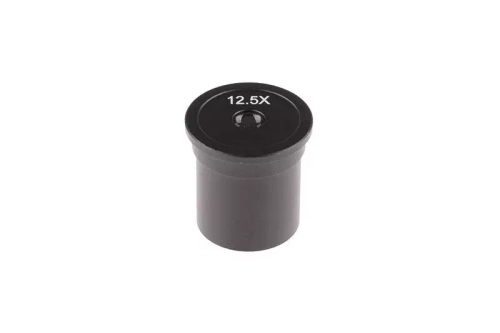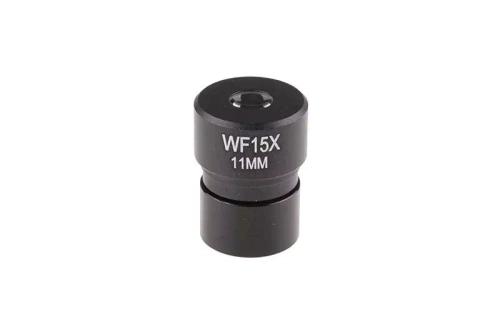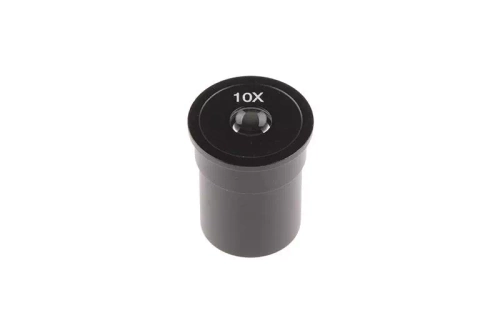Microscopes
Microscopes are revolutionary devices that have made many valuable discoveries possible. Along with them, a separate field of science and technology was even created - optical microscopy. Microscopes are commonly used in biology and medicine. Using it you will find out how even the smallest elements of our world are built, learn the exact structure of the human body or other living organisms. Microscopes have currently a variety of applications and are used not only in professional research laboratories but are also great for learning in schools and universities.
How does the optical microscope work?
Microscopes enable high magnification of the studied objects which are located close to us. Thanks to them you can make observations even of such organisms that are invisible to the naked eye. The primary type of microscope is the optical microscope which uses light to magnify the object under study. The source of light can be natural - picked up by a special mirror - or artificial. Then its source is a small incandescent bulb or LED, which is usually located under the test sample. Light passes through an optical system consisting of multiple lenses, and we get a magnified image.
How is the microscope built?
Microscopes consist of an optical and mechanical system. The optical system includes an microscope eyepiece responsible for magnification and a microscope objective that produces inverted, magnified and virtual images.
The mechanical system is used for the optimal adjustment of optical elements, which is why its precision and stability are very important. It includes the tube, the screws used to adjust the focus and the table on which the test sample is placed.
What can optical microscopes be used for?
The use of microscopes can be very diverse, as they allow observation of a wide variety of objects that require examination under magnification. They are used in biology, medicine, jewelry, geology or chemistry and physics. Microscopes are also great for teaching, which is why you'll find a school microscope in virtually every school. What else they can be used for depends on the type of microscope.
Types of microscopes
In addition to optical microscopes, other types of microscopes are available. Here are some of them:
- Digital microscope - used in the field, and you can display the resulting view on your computer screen.
- Electron microscope - used to observe microorganisms such as bacteria and viruses. Its image is either transmitted to a camera or captured on photo film.
- Operation microscope - used in medicine, during surgical procedures.
- Stereo microscope - used in jewelry or in the preservation of monuments.
- Acoustic microscope - it uses the action of ultrasonic waves and allows magnification of opaque macro objects.
Key parameters and parts of a microscope
The range of microscopes is very rich and they are of varying quality. Each model has different accessories and optical elements that affect the image quality, and thus the observation. It is worth getting acquainted with their parameters because thanks to this you will be able to choose high-quality equipment.
- Objective - it captures light rays and is responsible for the magnification of a given object. It can be magnified 1x, 10x, 40x or even 100x.
- Eyepiece - enables making observations and affects the magnification of the image formed by the objective.
- Magnification - what magnification microscope enable you to obtain depends on the product of: the magnification of the eyepiece, objective and eyepiece cap. Only after calculating this value do we know what maximum magnification the device achieves. The best microscopes even achieve a magnification of 3500x, but these are, of course, tools used mainly in research laboratories.
What kind of microscope should I buy?
Choosing the right microscope depends on what kind of observations you intend to make. To begin with, you need to specify at what magnification you want to see objects. Beginners should be content with magnifications from 40x to 400x, and a microscope with LEDs.
Microscopes are very often extended with additional accessories that enhance the capabilities of the device. They also facilitate its operation and maintenance. The purchase of additional accessories is necessary anyway because, without slides or biological preparations, it is impossible to make observations.
Optical microscope - price and models
Our store has microscopes from many different brands, which differ in purpose and design. The price of the microscope depends on the components used in it. If you are a novice scientist, you don't need very advanced and expensive equipment at all. For example, you can buy USB-powered digital microscopes at an affordable price. They are compact and convenient to use in the field, so they will work well for observation of nature. Even such small devices offer great possibilities. See for yourself what new perspectives microscopes open up for you!
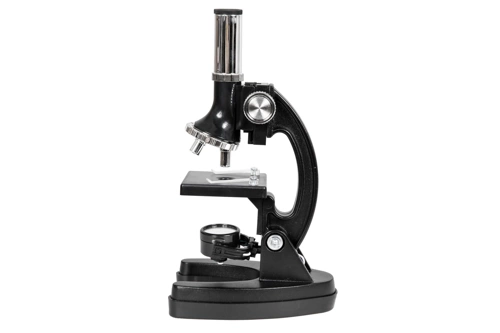
- Brand: OPT
- eyepiece: 20x
- lenses: 15x, 30x, 60x
- range of zoom: 1200x, x300, x600
Microscope OPTICON Lab Starter
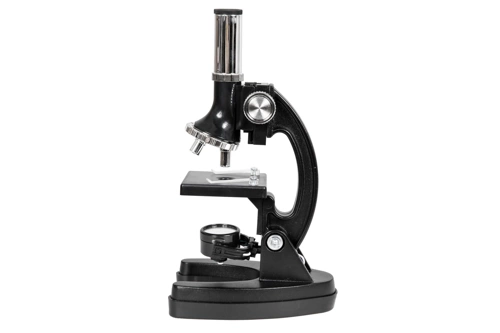
- Material: Polymer+Metal Magnification range: 300x, 600x i 1200x Eyepiece : 20x Objective lenses : 15x, 30x, 60x Natural light Artificial light Prepared slides Blank slides Laboratory toolkit 98 pieces!
Microscope OPTICON Lab Pro

- Brand: OPT
- lenses: 100x, 10x, 40x
- lighting: Adjustable
- range of zoom: 100x - 1000x
Microscope OPTICON SkillMaster PRO
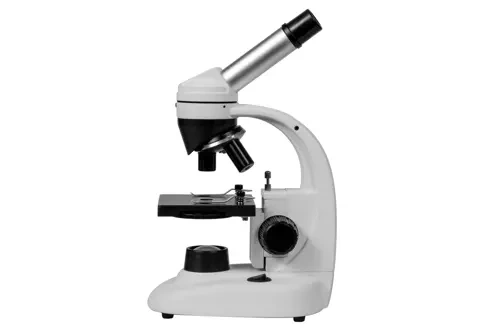
- Magnification Range: 40x-1024x Eyepieces : 10WF ,16WF Objectives : 4x, 10x, 40x Electric Light Ready to view slides Clear preparation glass pieces Lab tool kit Case USB digital eyepice 0,1 Mpix LEDpen
Microscope OPTICON Bionic MAX

- Brand: OPT
Microscope slides Human Anatomy

- Brand: OPT
Microscope slides Botanics

- Brand: OPT
- eyepiece: 10x
- lenses: 10x, 40x, 4x
- lighting: LED
- range of zoom: 40x - 1024x
OPTICON BIOLIFE microscope

- Brand: OPT
- lenses: 10x, 40x, 4x
- lighting: Adjustable
Microscope OPTICON BIOLIFE PRO

- Zoom Range: 40x - 640x Eyepieces: WF10x WF16x Lenses: 4x, 10x, 40x LED Double Layer Illumination
OPTICON Investigator XSP-48 Microscope
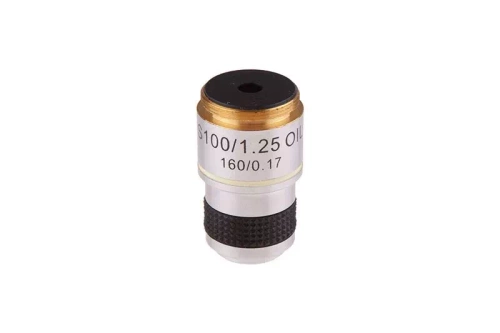
- Zoom: 100x, oil Numerical aperture: 1.25 Thread diameter standard: 20 mm Weight: 50 g Material: Metal Manufacturer: Opticon
Microscope Eyepiece - 100X (20mm)
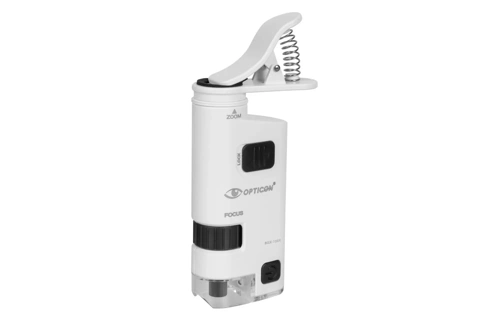
- Zoom Range: 80 - 120x Material: Polymer Color: White Weight: 65 g Power Source: 3 x AAA LED single-layer lighting
Pocket Eye 80-120X Mini Microscope
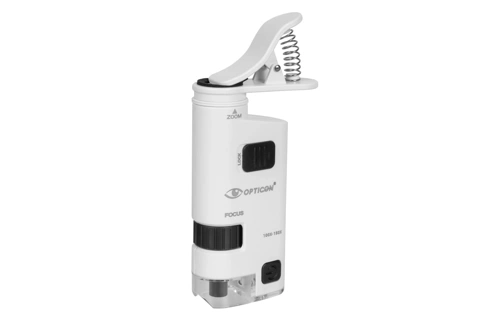
- Zoom Range: 100 - 150x Material: Polymer Color: White Weight: 65 g Power Source: 3 x AAA LED single-layer lighting
Pocket Eye 100-150X Mini Microscope

- Zoom Range: 120 - 190x Material: Polymer Color: White Weight: 65 g Power Source: 3 x AAA LED single-layer lighting
Pocket Eye 120-190X Mini Microscope

- Brand: OPT
- weight [g]: 2200
Opticon XSP-42LCD microscope

- Brand: OPT
- lenses: 100x, 10x, 40x
- lighting: Adjustable
- range of zoom: 100x - 1000x
Microscope OPTICON Genius

- Brand: OPT
- eyepiece: 20x
- lenses: 15x, 30x, 60x
- range of zoom: 1200x, x300, x600
Microscope OPTICON Student

- Zoom: 10x Barrel size: 23 mm Weight: 15 g Material: Metal + polymer Manufacturer: Opticon
10x Microscope Eyepiece
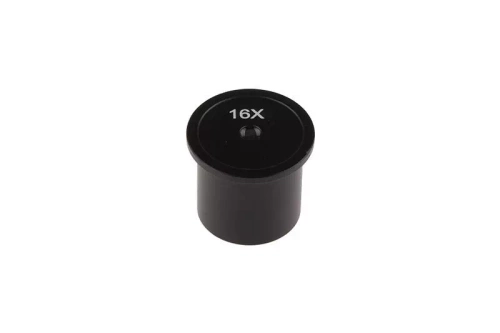
- Zoom: 16x Barrel size: 23 mm Weight: 15 g Material: Metal + polymer Manufacturer: Opticon
16x Microscope Eyepiece

- Zoom: 20x Barrel size: 23 mm Weight: 20 g Material: Metal + polymer Manufacturer: Opticon
20x Microscope Eyepiece
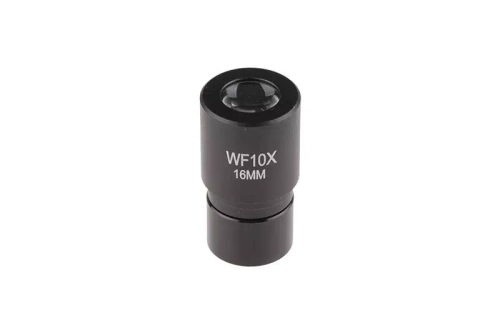
- Zoom: 10x Barrel size: 23 mm Weight: 35 g Material: Metal + polymer Manufacturer: Opticon
WF 10x Microscope Eyepiece
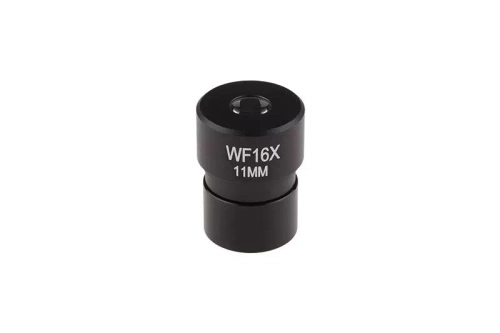
- Zoom: 16x Barrel size: 23 mm Weight: 35 g Material: Metal + polymer Manufacturer: Opticon
WF 16x Microscope Eyepiece
- 1
- 2





